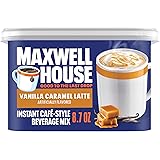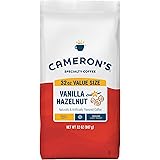Chef-Recommended Kitchen Equipment: Navigating Value in Culinary Tools
In the dynamic world of home cooking, selecting the right kitchen equipment can often feel like a culinary tightrope walk. As highlighted in the accompanying video, the journey from a simple task to a professional result often depends on the tools at your disposal. This exploration dives deeper into the nuanced considerations that separate everyday essentials from high-performance investments, guided by the discerning eyes of professional chefs.
For many home cooks and aspiring culinarians, the question isn’t just about what to buy, but what truly offers value. Chefs emphasize key criteria such as durability, precision, and ease of use, elements that transcend mere price tags. Understanding these core principles is crucial when comparing an affordable gadget against a more expensive, multi-functional kitchen tool.
The Quest for the Perfect Kitchen Tool: Durability, Precision, and Ease of Use
Professional kitchens operate under immense pressure, demanding tools that can withstand rigorous, continuous use while consistently delivering precise results. This ethos naturally translates into specific requirements for any chef-recommended kitchen equipment. Durability is paramount; an item that fails after a few uses, regardless of its initial cost, represents a false economy.
Precision, on the other hand, allows for consistency and control, crucial for replicating recipes and achieving desired textures or flavors. Finally, ease of use is not merely about convenience but also about efficiency and reducing human error, particularly under pressure. These three pillars form the foundation upon which the true worth of any kitchen tool is judged, guiding consumers beyond superficial aesthetics or marketing claims.
Blender Battle: Philips vs. Ninja Foodi – Power, Capacity, and Versatility
Blenders are often considered kitchen workhorses, indispensable for everything from morning smoothies to sophisticated sauces. The video starkly contrasts two popular models: the budget-friendly Philips Blender and the more premium Ninja Foodi Blender and Soup Maker. While both fulfill the basic function of blending, their specifications and capabilities diverge significantly, impacting their utility and value proposition.
Entry-Level Blending: The Philips 450W
The Philips Blender, priced at a modest £20.82, offers a 1.25-liter capacity and a 450-watt motor. Its compact size and straightforward design make it an attractive option for users seeking a simple, no-frills blender. The video’s test revealed its surprising power when tackling ice, suggesting it’s more than capable for standard smoothie preparation. Its plasticky build might raise durability questions for some, but its intuitive operation ensures accessibility for all skill levels.
For occasional use or basic tasks, the Philips model represents an exceptional value, especially given its performance in challenging tests. While it may not possess the advanced features of higher-end models, its core functionality and compact footprint make it a viable option for smaller kitchens or budget-conscious consumers. The fact that it performed admirably in creating a smoothie bowl, even if with a “pulsy” texture, demonstrates its competence for everyday needs.
Stepping Up: The Ninja Foodi Blender and Soup Maker
The Ninja Foodi Blender and Soup Maker, commanding a price of £149.99, is a significantly more robust piece of kitchen equipment. With a 1.75-liter capacity and a powerful 1000-watt motor, it offers enhanced performance and a broader range of functionalities. Beyond blending, its heat-proof design allows it to double as a soup maker, adding a layer of versatility that justifies its higher price point.
The Ninja’s ability to achieve a “much smoother” and “more yogurty” smoothie texture, even with frozen berries, underscores its superior blending capability. This is attributed to its sophisticated blending cycles that alternate between high and low speeds, catering to a diverse array of ingredients. Such advanced features cater to users who prioritize texture, consistency, and multi-functional use, willing to invest nearly seven times more for a comprehensive culinary tool.
Whisking Wonders: Nisbets Essentials vs. Schneider Stainless Steel – Speed and Ergonomics
A whisk might seem like a simple tool, yet its design profoundly impacts efficiency and results. The video compared two balloon whisks: the Nisbets Essentials and the Schneider Stainless Steel, revealing how material quality and design influence performance in a task as fundamental as whipping egg whites.
The Budget Beater: Nisbets Essentials Whisk
At an astonishing £1.99, the Nisbets Essentials whisk is undeniably budget-friendly. In the timed challenge, it produced stiff peaks in 1 minute and 52 seconds. While functional, its lighter, less rigid construction might contribute to increased arm fatigue during extended use. For quick, light tasks like scrambling eggs or mixing a vinaigrette, this whisk is perfectly adequate.
However, for more demanding applications, such as whipping large batches of cream or egg whites, its lack of “firmality” in the spindles could make the process more arduous and time-consuming. This highlights a common trade-off in inexpensive tools: they get the job done, but perhaps not with the same ease or efficiency as their premium counterparts.
The Professional’s Choice: Schneider Stainless Steel Whisk
The Schneider stainless steel whisk, priced at £14.99, demonstrated superior performance, achieving stiff peaks in a mere 1 minute and 11 seconds—a staggering 36% faster than its budget rival. This significant difference is attributed to its heavier, more rigid construction and thicker metal spindles, which provide enhanced leverage and air incorporation.
The heat-resistant handle is an added benefit for professional use, allowing the whisk to be used in hot preparations without compromising grip or safety. For chefs or serious home bakers, this 7.5 times more expensive whisk justifies its cost through increased efficiency, reduced physical strain, and consistent, high-quality results. The “firmality of the spindles,” as noted, is critical for effective aeration and stability in emulsions.
Induction Innovations: IKEA Tillreda vs. Buffalo Single Zone Hob – Portability and Professionalism
Induction hobs represent a significant leap in cooking technology, offering rapid heating and precise temperature control through electromagnetic fields. The video showcased two distinct induction cooktop options: the portable IKEA Tillreda and the robust Buffalo Touch Control Single Induction Hob. These cater to different needs, from casual use to demanding professional environments.
Accessible Induction: The IKEA Tillreda
The IKEA Tillreda portable induction hob, costing just £39, democratizes induction technology. Its compact, sleek design and portability make it an ideal solution for small living spaces, supplementary cooking surfaces, or even “glamping” setups. The ability to plug it in almost anywhere instantly expands cooking capabilities for those without a full kitchen or wanting an extra burner.
Despite its affordability, the Tillreda demonstrated rapid heating, quickly getting a pan hot enough for sautéing mushrooms. Its primary appeal lies in its convenience and cost-effectiveness, offering the benefits of induction—speed, safety (as it only heats the pan), and energy efficiency—without a hefty investment. For occasional or auxiliary use, it presents an outstanding value proposition.
Commercial-Grade Performance: The Buffalo Touch Control Hob
Stepping into the realm of professional kitchen equipment, the Buffalo Touch Control Single Induction Hob is priced at £155.98. With a strong stainless steel base and a large capacity ceramic glass top, it’s designed for durability and high-volume use. Its 10 temperature settings offer granular control, essential for professional culinary tasks where precise heat management is critical.
The Buffalo hob visibly got hotter faster, making it ideal for tasks requiring intense, immediate heat like searing or flash-frying. While it shares the core benefits of induction, its construction and control options are geared towards consistent, demanding performance. For commercial kitchens, catering, or serious home chefs seeking robust, reliable induction power, this unit offers a compelling blend of features and build quality, warranting its higher price point.
The Art of Coffee: Moka Pot, Swan Retro, and Sage Bambino Plus – Brewing Excellence at Every Price Point
Coffee brewing is an art form with diverse tools, each offering a unique experience and flavor profile. The video’s exploration of coffee machines ranged from the venerable Moka pot to advanced espresso makers, illustrating how different technologies impact taste, convenience, and cost. The choice of coffee machine often reflects a user’s commitment to the brewing process and desired outcome.
Traditional Brew: Bialetti Moka Express
The Bialetti Moka Express, a stovetop coffee maker, represents a timeless method of brewing rich, strong coffee, often confused with espresso. Priced at £23.32, it offers a simple, robust, and highly effective way to make coffee at home. While it requires some “admin” for cleaning, its mechanical simplicity means there’s little that can go wrong, ensuring long-term reliability.
The Moka pot excels in extracting deep coffee flavors, often surpassing entry-level espresso machines in this regard, as noted in the taste test. It produces a concentrated brew that serves as an excellent base for various coffee drinks. For those who appreciate traditional brewing methods and robust flavor without the complexity or cost of an espresso machine, the Moka pot is an unparalleled value.
Entry-Level Espresso: Swan Retro Pump Machine
The Swan Retro Pump Espresso Coffee Machine, priced at £90.49, bridges the gap between stovetop methods and advanced espresso makers. It offers a “simple barista-style machine” experience, allowing users to manually control the shot extraction. However, this manual control can lead to inconsistencies, as evidenced by the “Guinness-like” crema and thinner coffee described in the video, suggesting a less optimal pressure profile or extraction.
Despite its limitations compared to professional machines, the Swan offers an accessible entry point into home espresso brewing. It allows users to experiment with milk frothing and learn the basics of espresso preparation without breaking the bank. For an aspiring home barista on a budget, it offers a stepping stone to more advanced techniques, though James questioned its ultimate value if one is already looking for a quality extraction.
Near-Barista Quality: Sage Bambino Plus Espresso Machine
The Sage Bambino Plus Espresso Coffee Machine, at £329, represents a significant investment, but one that brings “as close as you’ll get to being a barista at home for a reasonable price.” This brushed stainless steel machine boasts advanced features like computer-aided temperature control for milk, simplifying the frothing process and ensuring consistent results. Its ability to produce coffee with a flavor profile far superior to the Swan, akin to the Moka pot but with the benefits of a pump espresso, highlights its sophisticated extraction capabilities.
The Sage Bambino Plus is designed for serious coffee enthusiasts who prioritize consistent, high-quality espresso and perfectly frothed milk. While it’s a substantial financial commitment, it delivers near-professional results by optimizing key variables like pressure and temperature. For those ready to elevate their home coffee craft, the Sage Bambino Plus offers a compelling blend of technology and performance, justifying its position as a high-end option among home coffee machines.







